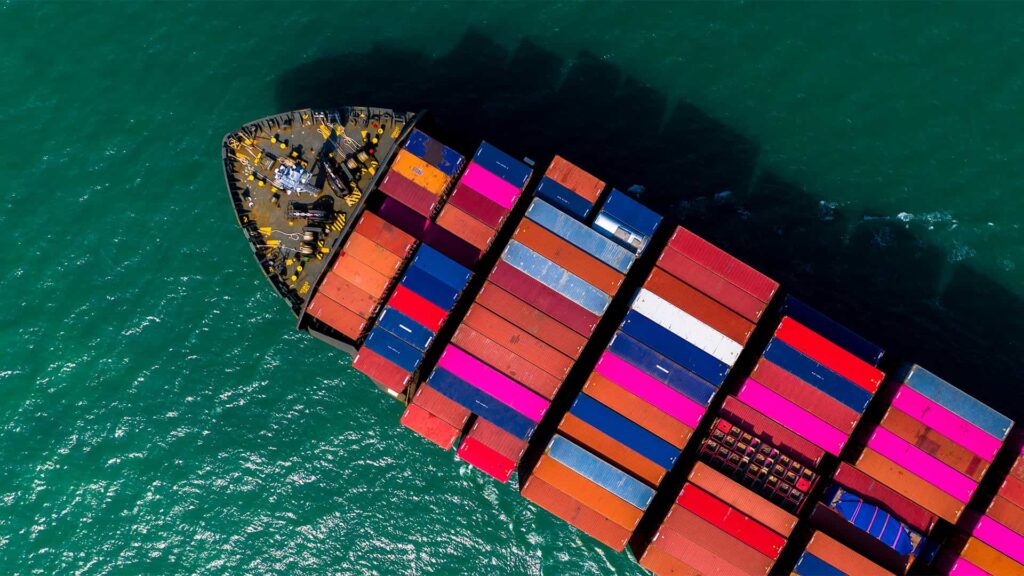
Ports and digitalisation: what next?
A look at the forthcoming changes to the IMO Convention on Facilitation of International Maritime Traffic and the legal, operational and technical issues arising from increased digitalisation of ports.
In May 2022, the IMO’s Facilitation Committee approved changes to the Convention on Facilitation of International Maritime Traffic (the FAL Convention)1 which will make it mandatory for all member states to implement “single windows” for the electronic exchange of data related to vessel calls.
The amendments are expected to come into force on 1 January 2024, leaving ports with just over 18 months to implement the changes required for compliance. In this article we look at what is required for compliance, the anticipated risks and challenges that ports may face in implementing these changes and the legal issues arising from the ever-increasing digitalisation of port operations.
What is a “single window”?
The number of stakeholders with interest in a single vessel calling at a single port is numerous. The table below summarises the key stakeholders for a simple discharge operation of a bulk agricultural commodity.
|
Government agencies |
Trade partners |
Maritime partners |
| Customs | The receiver and the receiver’s storage area or warehouse | The terminal or port authority if privately owned |
| Sanitary/phytosanitary authorities | On-carriage hauliers | Bunker suppliers, chandlers, ships’ agents |
| The port authority if publicly owned | Banks involved in financing the transaction | Pilots |
| Immigration authorities | Tug operators | |
| Port state control | Stevedores and mooring personnel | |
| Health authorities |
The purpose of a single window for trade facilitation purposes is to streamline the exchange of data required by each of these stakeholders so that the parties involved in the trade transaction do not have to provide the same data, in duplicate form, to multiple different parties in multiple different formats. The idea is to funnel the submission of information to a single portal from where it can be accessed or distributed to the relevant parties that require it.
The IMO has issued “Guidelines for Setting up a Maritime Single Window” 2 (the Guidelines) which define a maritime single window as “a one-stop service environment that covers maritime and port administrative procedures, such as port entry/departure declaration, notice of security reports, and other related information between private sectors and public authorities nationwide”. This is in contrast to a “trade single window” which is defined as an environment that covers procedures related to export and import of goods and customs clearance.
The exchange of data via electronic means has been mandatory under the FAL Convention since 2019. However, research by the International Association of Ports and Harbours 3 (IAPH) in January 2021 found that only one third of respondent ports had fully implemented an electronic data exchange system, and even these systems did not allow for electronic submission of all documents required in the FAL Convention. Therefore, it appears that there is significant work to do for all ports to implement fully compliant electronic maritime single windows by 1 January 2024.
What do the amendments to the FAL Convention require?
The current version of the FAL Convention encourages, but does not mandate, the use of single windows. The amendments update the language to make it mandatory for public authorities to “establish, maintain and use single window systems for the electronic exchange of information required on arrival, stay and departure of ships in ports” and “to combine or coordinate the electronic transmission of the data to ensure that information is submitted or provided only once and reused to the maximum extent possible”.4 The amendments provide that the single window must allow for submission of all of the documents at Standard 2.1 of the FAL Convention5, and must allow for documents to be transmitted separately or in combined form, according to the requirements of the data exchange system. The single window does not have to be the mechanism by which public authorities communicate decisions and information to the ship, but the amendments provide that consideration shall be given to the single window also having this functionality, so that it effectively operates as a two-way system.
The FAL Convention and the Guidelines do not prescribe the type of system that must be used, leaving this to the choice of the implementing member state. However, they do require that data submitted to the single window is submitted in conformity with internationally agreed standards. The amendments also make clear that the required information from the ship must be accepted from any location, as long as the provider has been certified and authenticated, and that it is not necessary for a local agent to be used. Further, the amendments recommend that information regarding certification and authentication requirements are made availably publicly and electronically.
Challenges and risks
The IAPH survey asked participants to identify the biggest challenges to the implementation of maritime single windows in their countries. Surprisingly, budget and available technology were not top of the list. Instead, the most commonly cited obstacles were multi-stakeholder collaboration, followed by the legal framework. This indicates perhaps a certain resistance to change from government agencies who may see the use of a single window as a threat to their power, along with a lack of trust from and between private entities who may feel that sharing data could damage their competitive edge. These findings suggest that statutory reform could play an important role in enhancing support for the implementation of single windows by making clear which government agencies are involved in the single window and exactly what their role and data sharing obligations are, coupled with policies that make it clear to private stakeholders how commercially sensitive data will be shared and protected.
Legislative changes will also be required to support the move to a digitalised environment. For example, laws which make it clear that paper and electronic documents have functional equivalence, that allow for the electronic exchange of data required by government agencies, and which provide rules for electronic signatures. In addition, the body which operates the single window, whether governmental or private, will likely need statutory authority to do so.
On the technical side, any move from paper documents to digital documents comes with inherent risks: for example, how to ensure the authenticity and integrity of the data submitted, how to ensure the data is transmitted and stored securely, how to maintain confidentiality in the data and how to ensure those submitting data are authorised to do so. Many of these are technical challenges which will require the use of expert IT input, likely from external advisors as many ports are unlikely to already have sufficiently skilled staff to manage the transformation. Ports may also wish to use existing platforms from private developers which raises issues regarding intellectual property rights, data protection, and product liability in the event any software fails. All of these issues need to be analysed and understood prior to engaging in a digitalisation project.
A further challenge is ensuring that the system used for the single window is compatible with other government agencies’ systems, both domestically and abroad, and that information can be shared between the relevant systems. This requires harmonisation or standardisation between these systems and the data provided to ensure interoperability. Again, this may require legislative or regulatory intervention setting out what the relevant minimum standards are.
Another risk common to all digitalisation projects is the increased exposure to cyber risk, including systems being compromised or even taken completely off-line. Ports looking to implement fully electronic processes should simultaneously undertake a thorough review of the cyber security systems and policies and update these as required to take account of the increased risk. This review should include an assessment as to whether existing business continuity plans remain fit for purpose in the face of an increased cyber threat, and whether there is sufficient capacity in the current IT systems to allow for a quick recovery from a cyber-attack.
Operational changes
On the operational side, port authorities will have to audit their existing contracts with terminal operators, concessionaires, and other counterparties to ensure that these remain up to date and fully cover the new, digital way of working. For example, a port may wish to impose a requirement on users of the single window that they have a minimum level of cyber security defences, in order to safeguard the single window system from vulnerabilities present in third party systems. They may also wish to consider whether their current contracts provide sufficient safeguards in the event of a cyber-attack, or whether this needs to be included as a force majeure event.
It is likely a whole new set of terms and conditions will need to be drafted which governs access to and use of the single window, how users will be authenticated, and any liabilities, indemnities and exclusions of liabilities arising from the same. There will likely also need to be agreements between key stakeholders as to how information uploaded to the single window is to be shared and accessed. That may require legislative and policy support to ensure government agencies that are used to working in a siloed way are incentivised, if not obliged, to cooperate, to share data, and to agree on common working standards for the single window.
In addition to an audit of the port’s contractual arrangements and policies, it is important that a port looking to digitalise also audits its insurance position to determine whether their current level of cover is sufficient to protect against the new risks of operating digitally.
Conclusions
The changes to the FAL Convention are in line with the current trend towards ever increasing levels of digitisation and digitalisation across the maritime trade supply chain 6, and a broader drive from multinational bodies such as the World Trade Organisation and World Customs Organisation towards paperless trading. The move to a digital, maritime single window will require significant operational, technical, and legislative reform. It will also require buy in from the current stakeholders, including disparate government entities, and for these parties to overcome siloed thinking and lack of trust issues. As one author notes, “digital transformation implies a cultural change that requires organizations to challenge the status quo7..” Getting stakeholders to disrupt the status quo is likely to be the most difficult obstacle to achieving quick and widespread implementation of maritime single windows.
If you are embarking on a digitalisation project and require advice in relation to the issues identified in this article, please contact the author or your usual HFW contact.
Footnotes
- The approved revised text can be found in the meeting documents from the 46th FAL Committee meeting, as FAL 46/3, and more background on the IMO’s work on electronic business can be found here – https://www.imo.org/en/OurWork/Facilitation/Pages/ElectronicBusiness-default.aspx
- https://wwwcdn.imo.org/localresources/en/OurWork/Facilitation/Facilitation/FAL.5-CIRC.42-REV.1.pdf We understand these Guidelines have also been updated to reflect the forthcoming changes to the FAL Convention but as at the time of publication the revised Guidelines were not publicly available.
- https://sustainableworldports.org/wp-content/uploads/IAPH-FAL-Survey-Report-Jan-2021.pdf
- IMO Press Release dated 23 May 2022 – https://www.imo.org/en/MediaCentre/PressBriefings/Pages/FAL-46-amendments.aspx
- These include the Cargo Declaration, Dangerous Goods Manifest, Crew List and Security related information.
- See our recent articles on developments regarding e-bills of lading and the forthcoming adoption in English law of statutory amendments supporting the use of electronic trading documents.
- “Port Economics, Management and Policy”, Chapter 2.4, Dr. Jean-Paul Rodrigue, Dr. Theo Notteboom & Dr. Athanasios Pallis, at Chapter 2.4 – Digital Transformation | Port Economics, Management and Policy (porteconomicsmanagement.org)












